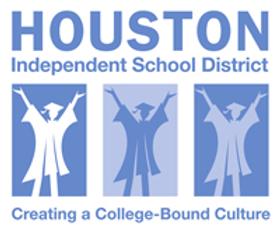Schools in one of the largest school districts in the country recently celebrated the fruit of their labor - with cash that can be used to further improvements at high achieving schools. The Hawaii State Department of Education distributed $1 million in one-time grant funding to deserving schools that have showed marked improvement and academic progress. The grants were offered under the new Strive HI awards, with money from a “Race to the Top” federal grant received in 2010.
According to a news release at the Hawaii State Department of Education website, 32 schools received one-time grants of varying amounts. Schools were chosen for the awards based on academic progress over two consecutive years, allowing the hardest working schools to receive additional funding to continue their improvement efforts. Award amounts ranged $12,500 to $100,000 for the highest performing schools throughout the islands.
“We are proud to be able to financially recognize the hard work of the teachers, students and staff of these schools,” Kathryn Matayoshi, superintendent of Hawaii schools, stated in the news release. “The Strive Hi awards reflect that the department is not only focused on intervention in current priority schools, but also encourages other schools across the islands to keep striving high.”
And the Winners Are…
Hawaii News Now lists the recipients of the $100,000 grants, which include:
- Hilo Intermediate School
- King Intermediate School
- Moanalua Middle School
- Halau Ku Mana Public Charter School (Oahu)
All of these schools completed the restructuring provision under No Child Left Behind and reached their progress benchmarks for two consecutive years. KHON 2 reports that King Intermediate School, Hilo Intermediate School and Moanulua Middle School showed the greatest improvement among all the schools in the state. King has now been removed from two-year supervision under No Child Left Behind policy. The principal of King, Sheena Alaiasa, was quick to thank the students at King that embraced new curriculum that led to the school’s improvement.
“Without your help, your support, our school wouldn’t be where it is today,” Alaiasa said. “You have studied hard, you have followed directions. You’ve even questioned why we are learning math and P.E.”
Two schools also received grants of $50,000, for moving closer to their “restructuring” benchmarks. Those schools were Benjamin Parker and Nanakuli elementary schools. Both of these schools received additional grant money for improving math and/or reading proficiency, according to the Honolulu Civil Beat.
Additional Grant Funding Provided
Schools also received grants under the Strive HI program if they made it to the top five percent for progress in math and reading proficiency. Schools that made the top five percent in both math and reading each received $25,000. Those schools included:
- Nanakuli Elementary School
- Thomas Jefferson Elementary School (Oahu)
- King Kekaulike Elementary School (Maui)
- Kalanianaole Elementary and Intermediate School (Hawaii Island)
- Keaau High School (Hawaii Island)
This additional award for Nanakuli brought the total amount of their grant to $75,000. Additional schools made it to the top five percent in either math or reading. These schools include:
- Aliamanu Elementary (Math)
- Benjamin Parker Elementary (Math)
- Haaheo Elementary (Math)
- Haleiwa Elementary (Reading)
- Hokulani Elementary (Reading)
- James Campbell High (Math)
- Kahakai Elementary (Math)
- Kanoelani Elementary (Math)
- Kanuikapono Learning Center Public Charter School (Reading)
- Ke Kula O Ehunuikaimalino (Reading)
- Keaau Middle (Math)
- Kealakehe High (Math)
- Kilohana Elementary (Math)
- King William Lunalilo Elementary (Math)
- Kohala High (Reading)
- Kula Kaiapuni O Anuenue (Reading)
- Lanakila Elementary (Math)
- Manoa Elementary (Reading)
- Maunawili Elementary (Reading)
- Pahoa High & Intermediate (Math)
- Red Hill Elementary (Reading)
- William P. Jarrett Middle (Reading)
With Benjamin Parker’s additional grant money for math proficiency, the school received total grant money of $62,500. Prize money must be used to further improvements at the schools. Schools have said the majority of the grant funding will probably go to additional student programs and teacher training. They also have the option to purchase technology, science equipment and musical instruments.
Recognition Ceremony Marks New Direction for Hawaii Schools
The schools receiving Strive HI awards were recognized at an awards ceremony held at King Intermediate School. Many VIPs were in attendance, including Hawaii Governor Neil Abercrombie.
“Everyone here today represents an opportunity that has been grasped and a goal that has been obtained,” Governor Abercrombie told the crowd at King. “Everyone here was challenged, challenged to bring out the best that they have within themselves and have succeeded.”
Matayoshi told Hawaii News Now that the goal of the awards is to recognize schools that wouldn’t be recognized under the federal accountability system. The federal system looks strictly at standardized test scores to determine whether schools are meeting their Adequate Yearly Progress (AYP). Strive HI is taking the recognition to the next level, by acknowledging schools that are making consistent progress toward meeting those goals.
“These awards signify a very significant shift in our strategic direction,” Matayoshi explained. “That’s the strategic plan that’s supported by our Board of Education and the department together, because we’re going away from a one-size-fits-all, you-make-it-on-the-test-or-you-don’t version of success to one that really looks at the progress of each school in each community.”
The Hawaii State Department of Education is the only school district in the country that encompasses the entire state where it is located. It is also the oldest school system west of the Mississippi. The district enrolls around 180,000 students and employs around 13,000 classroom teachers, making it one of the largest school districts in the United States.















